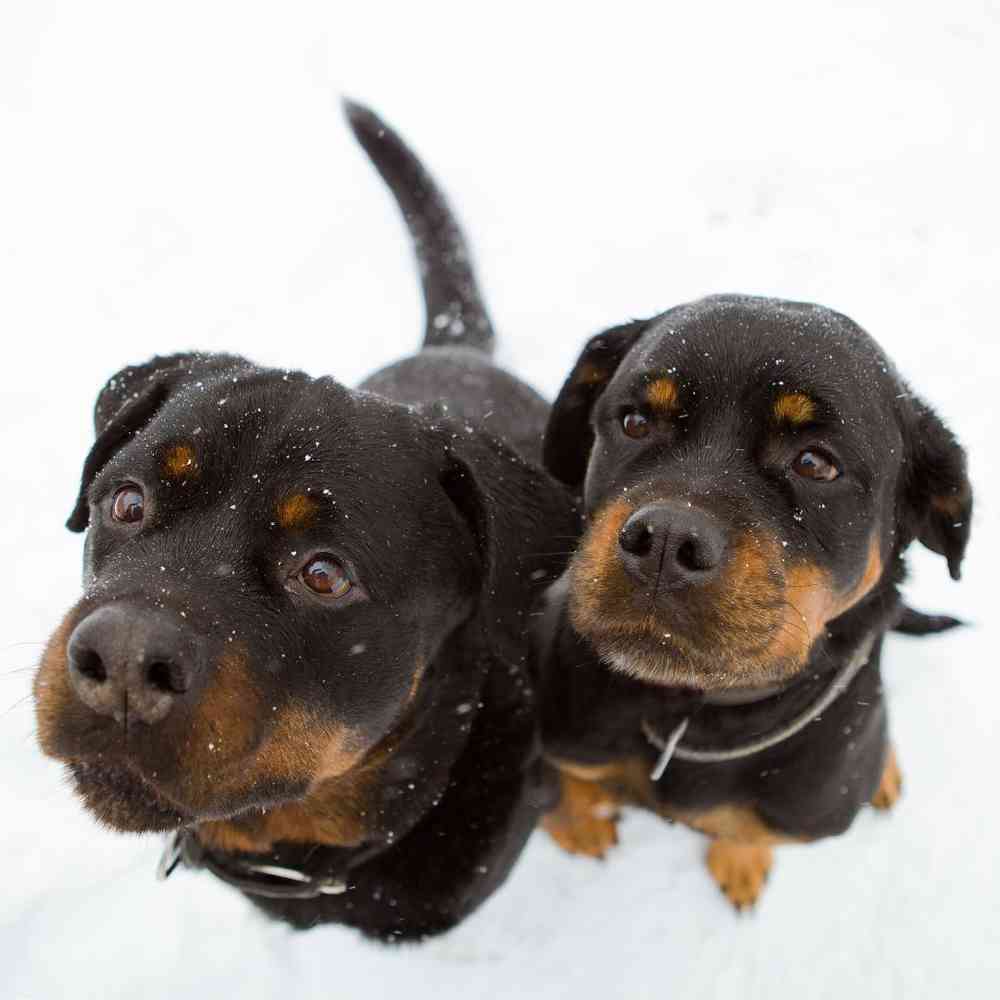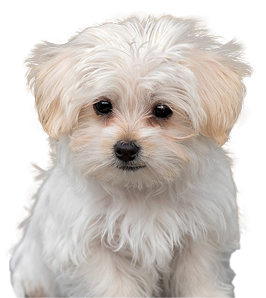
Guard Dog
AKC Registrable
Rottweiler
The Rottweiler is a robust working breed of great strength descended from the mastiffs of the Roman legions. A gentle playmate and protector within the family circle, the Rottie observes the outside world with a self-assured aloofness.
Available Pups
Puppy Knowledge
Breed Info
Clubs, Registries & Associations
American Canine Association Continental Kennel Club Universal Kennel Club International American Kennel Club United All Breed Registry America's Pet Registry, Inc. United Kennel Club (Based on breed recognition. See store for details on this particular puppy.)
Group
Working
Heritage
Originated in the German town of Rottweiler in Wurttemberg, the Rottweiler was a working dog in the Middle Ages as a herding dog, guard dog, messenger dog and a police K-9. Still used today for herding and guarding, this breed is also an excellent search and rescue dog, military and police K-9, tracking, schutzhund, competitive obedience, and assistance dog for people who are sight challenged.
Personality
The Rottweiler is a reliable, powerful, brave, fearless, assertive breed. Your Rottweiler is a natural guard dog, steady, composed, loyal and highly intelligent. This breed needs a lot of early socialization, great with family and friends, but wary of unfamiliar people and will chase other pets. You need to be a calm, knowledgeable, and humane owner giving consistent and committed leadership to your Rottweiler using only motivational training methods.
Exercise/Energy Level
The Rottweiler is a strong, athletic, high-energy dogs and need plenty of daily exercise including brisk daily walks, jogging, running or swimming. Do some nosework with this breed and your Rottweiler will love it. Inadequate mental stimulation can cause this breed to develop other behavior issues, such as destruction.
Additional Information
Grooming Requirements: Requires regular brushing and bathing. Coat: Short and thick Shedding: Average shedding Hypoallergenic: No, due to shedding Apartment Living: Good for apartment living if given sufficient exercise Lap Dog: No Good With Children: Good with all children when well socialized at an early age. Good With Other Pets: Generally good with other pets when well socialized at an early age.
Breed Standard
General Appearance
The ideal Rottweiler is a medium large, robust and powerful dog, black with clearly defined rust markings. His compact and substantial build denotes great strength, agility and endurance. Dogs are characteristically more massive throughout with larger frame and heavier bone than bitches. Bitches are distinctly feminine, but without weakness of substance or structure.
Head
Of medium length, broad between the ears; forehead line seen in profile is moderately arched; zygomatic arch and stop well developed with strong broad upper and lower jaws. The desired ratio of backskull to muzzle is 3 to 2. Forehead is preferred dry, however some wrinkling may occur when dog is alert. Expression is noble, alert, and self-assured. Eyes of medium size, almond shaped with well fitting lids, moderately deep-set, neither protruding nor receding. The desired color is a uniform dark brown. Serious Faults--Yellow (bird of prey) eyes, eyes of different color or size, hairless eye rim. Disqualification--Entropion. Ectropion. Ears of medium size, pendant, triangular in shape; when carried alertly the ears are level with the top of the skull and appear to broaden it. Ears are to be set well apart, hanging forward with the inner edge lying tightly against the head and terminating at approximately mid-cheek. Serious Faults--Improper carriage (creased, folded or held away from cheek/head). Muzzle--Bridge is straight, broad at base with slight tapering towards tip. The end of the muzzle is broad with well developed chin. Nose is broad rather than round and always black. Lips-Always black; corners closed; inner mouth pigment is preferred dark. Serious Faults--Total lack of mouth pigment (pink mouth). Bite and Dentition--Teeth 42 in number (20 upper, 22 lower), strong, correctly placed, meeting in a scissors bite--lower incisors touching inside of upper incisors. Serious Faults--Level bite; any missing tooth. Disqualifications--Overshot, undershot (when incisors do not touch or mesh); wry mouth; two or more missing teeth.
Neck, Topline, Body
Neck--Powerful, well muscled, moderately long, slightly arched and without loose skin. Topline--The back is firm and level, extending in a straight line from behind the withers to the croup. The back remains horizontal to the ground while the dog is moving or standing. Body--The chest is roomy, broad and deep, reaching to elbow, with well pronounced forechest and well sprung, oval ribs. Back is straight and strong. Loin is short, deep and well muscled. Croup is broad, of medium length and only slightly sloping. Underline of a mature Rottweiler has a slight tuck-up. Males must have two normal testicles properly descended into the scrotum. Disqualification--Unilateral cryptorchid or cryptorchid males. Tail--Tail docked short, close to body, leaving one or two tail vertebrae. The set of the tail is more important than length. Properly set, it gives an impression of elongation of topline; carried slightly above horizontal when the dog is excited or moving.
Forequarters
Shoulder blade is long and well laid back. Upper arm equal in length to shoulder blade, set so elbows are well under body. Distance from withers to elbow and elbow to ground is equal. Legs are strongly developed with straight, heavy bone, not set close together. Pasterns are strong, springy and almost perpendicular to the ground. Feet are round, compact with well arched toes, turning neither in nor out. Pads are thick and hard. Nails short, strong and black. Dewclaws may be removed.
Hindquarters
Angulation of hindquarters balances that of forequarters. Upper thigh is fairly long, very broad and well muscled. Stifle joint is well turned. Lower thigh is long, broad and powerful, with extensive muscling leading into a strong hock joint. Rear pasterns are nearly perpendicular to the ground. Viewed from the rear, hind legs are straight, strong and wide enough apart to fit with a properly built body. Feet are somewhat longer than the front feet, turning neither in nor out, equally compact with well arched toes. Pads are thick and hard. Nails short, strong, and black. Dewclaws must be removed.
Coat
Outer coat is straight, coarse, dense, of medium length and lying flat. Undercoat should be present on neck and thighs, but the amount is influenced by climatic conditions. Undercoat should not show through outer coat. The coat is shortest on head, ears and legs, longest on breeching. The Rottweiler is to be exhibited in the natural condition with no trimming. Fault--Wavy coat. Serious Faults--Open, excessively short, or curly coat; total lack of undercoat; any trimming that alters the length of the natural coat. Disqualification--Long coat.
Color
Always black with rust to mahogany markings. The demarcation between black and rust is to be clearly defined. The markings should be located as follows: a spot over each eye; on cheeks; as a strip around each side of muzzle, but not on the bridge of the nose; on throat; triangular mark on both sides of prosternum;on forelegs from carpus downward to the toes; on inside of rear legs showing down the front of the stifle and broadening out to front of rear legs from hock to toes, but not completely eliminating black from rear of pasterns; un-der tail; black penciling on toes. The undercoat is gray, tan, or black. Quantity and location of rust markings is important and should not exceed ten percent of body color. Serious Faults--Straw-colored, excessive, insufficient or sooty markings; rust marking other than described above; white marking any place on dog (a few rust or white hairs do not constitute a marking). Disqualifications--Any base color other than black; absence of all markings.
Gait
The Rottweiler is a trotter. His movement should be balanced, harmonious, sure, powerful and unhindered, with strong forereach and a powerful rear drive. The motion is effortless, efficient, and ground-covering. Front and rear legs are thrown neither in nor out, as the imprint of hind feet should touch that of forefeet. In a trot the forequarters and hindquarters are mutually coordinated while the back remains level, firm and relatively motionless. As speed increases the legs will converge under body towards a center line.
Temperament
Loyal, Loving, Confident Guardian
Disqualifications
Faults - The foregoing is a description of the ideal Rottweiler. Any structural fault that detracts from the above described working dog must be penalized to the extent of the deviation. Disqualifications - Entropion, ectropion. Overshot, undershot (when incisors do not touch or mesh); wry mouth; two or more missing teeth. Unilateral cryptorchid or cryptorchid males. Long coat. Any base color other than black; absence of all markings. A dog that in the opinion of the judge attacks any person in the ring.
Overview
About
A male Rottweiler will stand anywhere from 24 to 27 muscular inches at the shoulder; females run a bit smaller and lighter. The glistening, short black coat with smart rust markings add to the picture of imposing strength. A thickly muscled hindquarters powers the Rottie’s effortless trotting gait. A well-bred and properly raised Rottie will be calm and confident, courageous but not unduly aggressive. The aloof demeanor these world-class guardians present to outsiders belies the playfulness, and downright silliness, that endear Rotties to their loved ones. (No one told the Rottie he’s not a toy breed, so he is liable plop onto your lap for a cuddle.) Early training and socialization will harness a Rottie’s territorial instincts in a positive way.
History
The Roman Empire was the organizing force behind Western Europe’s formative years, and dog breeding was among the many pursuits forever altered by the Roman genius for practical problem solving. When conquering Roman legions marched to far-flung corners of the world, they brought their herds with them as food on the hoof. The army required tough, durable dogs to move and guard the herd. Utilizing Asian mastiff types as breeding stock, the Romans developed the distant ancestor of today’s Rottweiler. For centuries the legions struggled to contain Germanic tribes, the so-called barbarian hoards, massed on the Empire’s northern borders. The dogs the Romans brought to these areas became foundation stock for many German breeds. In the centuries after the empire’s collapse, the Roman drover dogs found work in the cattle town of Rottweil. It was here, moving herds from pasture to market and protecting all concerned from bandits and rustlers along the way, that they earned the name Rottweiler Metzgerhund, or Butcher’s Dog of Rottweil. The Rottie’s career in livestock ended with the rise of the railroad cattle cars in the 1800s. They found new work as police dogs, personal protectors, and all-around blue-collar dogs capable of performing various heavy-duty tasks. Rotties were among the first guide dogs for the blind, and in more recent times they distinguished themselves as search-and-rescue workers at such disaster sites as Oklahoma City and the World Trade Center. Considering the many roles the breed has played during its long history, it is remarkable that the Butcher’s Dog has changed little in form and temper since its first German breed standard was drawn up in 1901.
Standard
The ideal Rottweiler is a medium large, robust and powerful dog, black with clearly defined rust markings. His compact and substantial build denotes great strength, agility and endurance. Dogs are characteristically more massive throughout with larger frame and heavier bone than bitches. Bitches are distinctly feminine, but without weakness of substance or structure.
Nutrition
The Rottweiler should do well on a high-quality dog food, whether commercially manufactured or home-prepared with your veterinarian’s supervision and approval. Any diet should be appropriate to the dog’s age (puppy, adult, or senior). Some dogs are prone to getting overweight, so watch your dog’s calorie consumption and weight level. Treats can be an important aid in training, but giving too many can cause obesity. Learn about which human foods are safe for dogs, and which are not. Check with your vet if you have any concerns about your dog’s weight or diet. Clean, fresh water should be available at all times.
Grooming
The Rottweiler has a straight, coarse, medium-length outer coat that lies flat. The undercoat is present on the neck and thighs. He should be brushed weekly and bathed regularly. He sheds only very moderately for most of the year, although he will shed more profusely twice a year, usually in the spring and fall. His teeth should be brushed and nails trimmed weekly. The use of a grinding tool such as a Dremel is especially effective in trimming the nails.
Exercise
Rottweilers love swimming, walking, and trotting, especially with their people. The breed is muscular and athletic, and should have the opportunity to exercise on a daily basis. If there are jobs to do, Rottweilers learn easily to cart and are excellent workers in herding, tracking, and obedience. There is no limit to the canine activities that the Rottweiler can learn to do. Excess weight is not good for any dog, and exercise can help to keep your Rottweiler fit and healthy.
Training
The Rottweiler must be trained starting early in his life. Leadership, puppy socialization, basic training classes, and living in the owner’s home are key to raising a well-mannered Rottweiler. Rottweilers are “people dogs” who do not do well isolated from humans and life experiences. No matter the breed, dogs must live in this world complete with strange animals and people. One expert in the breed notes, “As a Rottweiler owner, it is my responsibility to spend time, energy, and money giving my dog the opportunities to learn on a day-to-day basis.” The breed is intelligent, highly trainable and wants to please, although some may be stubborn. It is very important that discipline be consistent, fair, and firm, without being rough. Roughhousing with the Rottweiler may encourage aggression and should be avoided. Rottweilers excel in many canine sports, and the breed works with a human partner in many functional roles.
Health
Before breeding, responsible Rottweiler breeders have potential sires and dams tested for health problems such as hip dysplasia, a malformation of the hip joint that can be detected via X-ray; eye diseases and heart conditions. Cancer sometimes occurs in the breed, as in all dogs. David Waters, Ph.D., DVM, of the Gerald P. Murphy Cancer Foundation, has done research focused on cancer prevention funded by the Rottweiler Health Foundation. Dr. Waters has discovered that cancer and longevity are linked to a careful vaccination regimen, thus strengthening the immune system, as well as keeping males and females intact until at least six years of age.
Trivia
Description
Some assert there is a German Rottweiler and an American Rottweiler. The German Rottweiler is thought to be shorter, more thickset and burly with a big block head. The American Rottweiler is thought to be taller and leggier without the block head. Arnold, a Rottweiler, is in the HBO series Entourage A Rottweiler was in the movie Lethal Weapon 3



